History of the Rolex Submariner – Part 2, The 55XX References and 1680 Date
Building on the strong foundation established with the first generation, Rolex continues to evolve its Submariner including a simple decision that would change the history of the model forever...
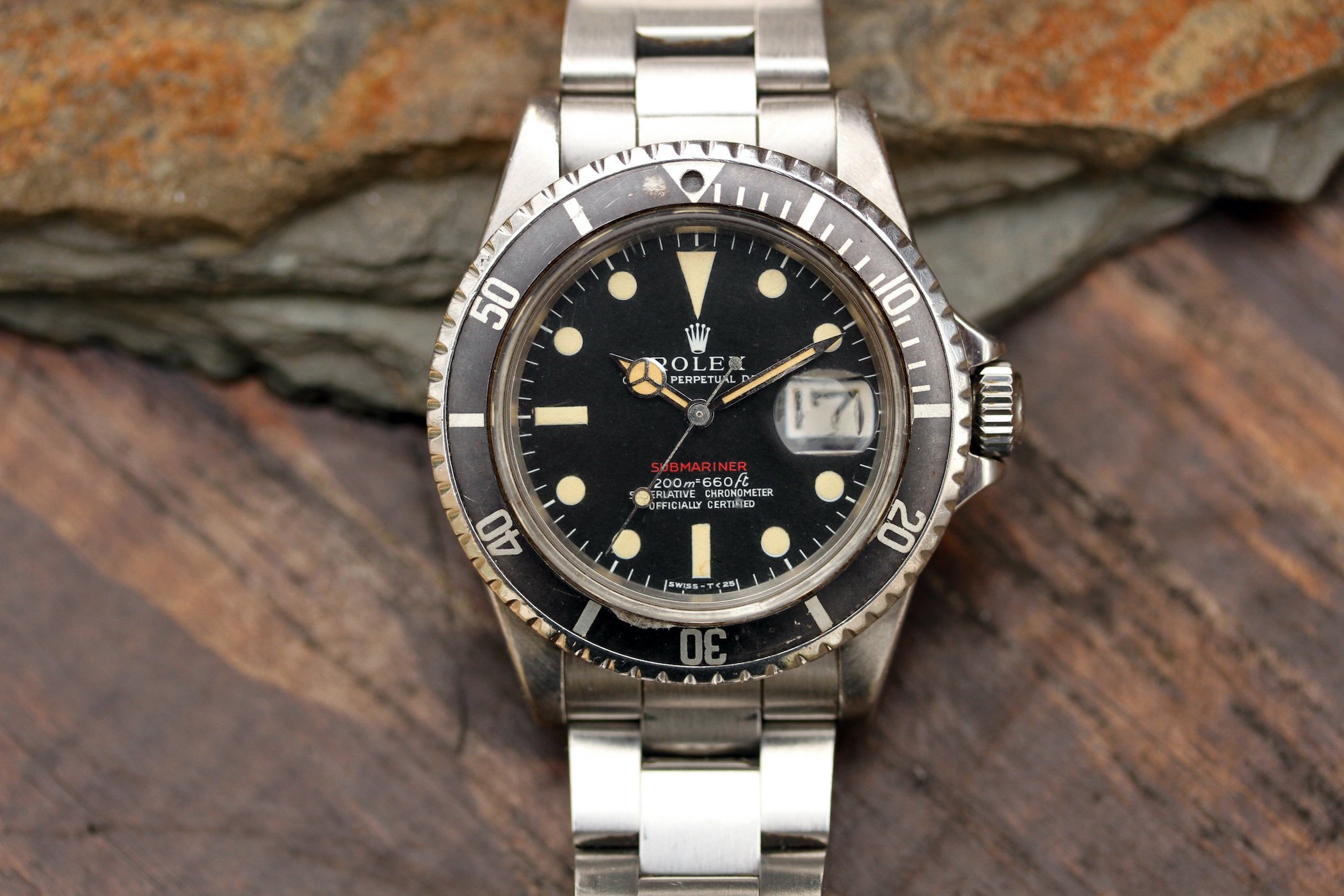
Welcome to Part 2 of our four-part, in-depth series on the Rolex Submariner. In Part 1 we covered the origins of the Submariner, the context in which it came to market and the first generation 6XXX references. You can find all the details here. Now, we turn our attention to what can broadly be considered the second generation of the Rolex Submariner: the 55XX references. We’ll also cover a watershed moment in the model’s development – the seemingly innocuous decision to add a date window. Not exactly a bold move I’m sure you’ll agree, yet it’s one that has come to redefine the Submariner and still divides opinion to this day.
As we saw in Part 1, in the early years of the Submariner, Rolex was busy reworking and evolving the model in that ‘oh so subtle way’ that only Rolex can pull off. Over a roughly five-year period, five different references were released, with a number of variations (or ‘Machs’, as the collectors like to call them) within these. By the time we get to the 55XX references though, things start to settle down a bit. Indeed, after some further experimenting Rolex lands on the key design characteristics for its Submariner that it will adopt for the next three decades (with many variations along the way, of course, most of which we will not cover here). Before that though, there were the two inaugural models in the Ref. 55XX series, which can be seen very much as the bridge between the first and second-generation of the Submariner.
Ref. 5510 & Ref. 5508 – 1958 – 1962
Although the reference number of both these models begins with ‘55’, they resemble the earlier 66XX references much more closely than the later 55XX references. That’s largely due to the fact that they were in production at the same time. In fact, the Ref. 5510 – the last of the ‘Big Crown’ Rolex Submariners – is virtually identical to the two-line Ref. 6538 we covered in Part 1. The key difference being that the Ref. 5510 was the first Submariner to use the newer 1530 calibre. The watch itself was only in production for a year and shares all the same traits of the Ref. 6538, including Mercedes hands, 200m water-resistance, etc.

At the same time, Rolex also released the Ref. 5508, which is much more similar to the Ref. 6536/1 we also covered in Part 1. This model features a smaller crown and thinner case, meaning water-resistance of 100m only, instead of 200m. We can start to see subtle dial evolutions here too, in terms of layout and text. Most notably, the upside-down triangle on the bezel transitions from a distinctive red to a more understated silver; a design trait that has carried through to the modern Submariners.
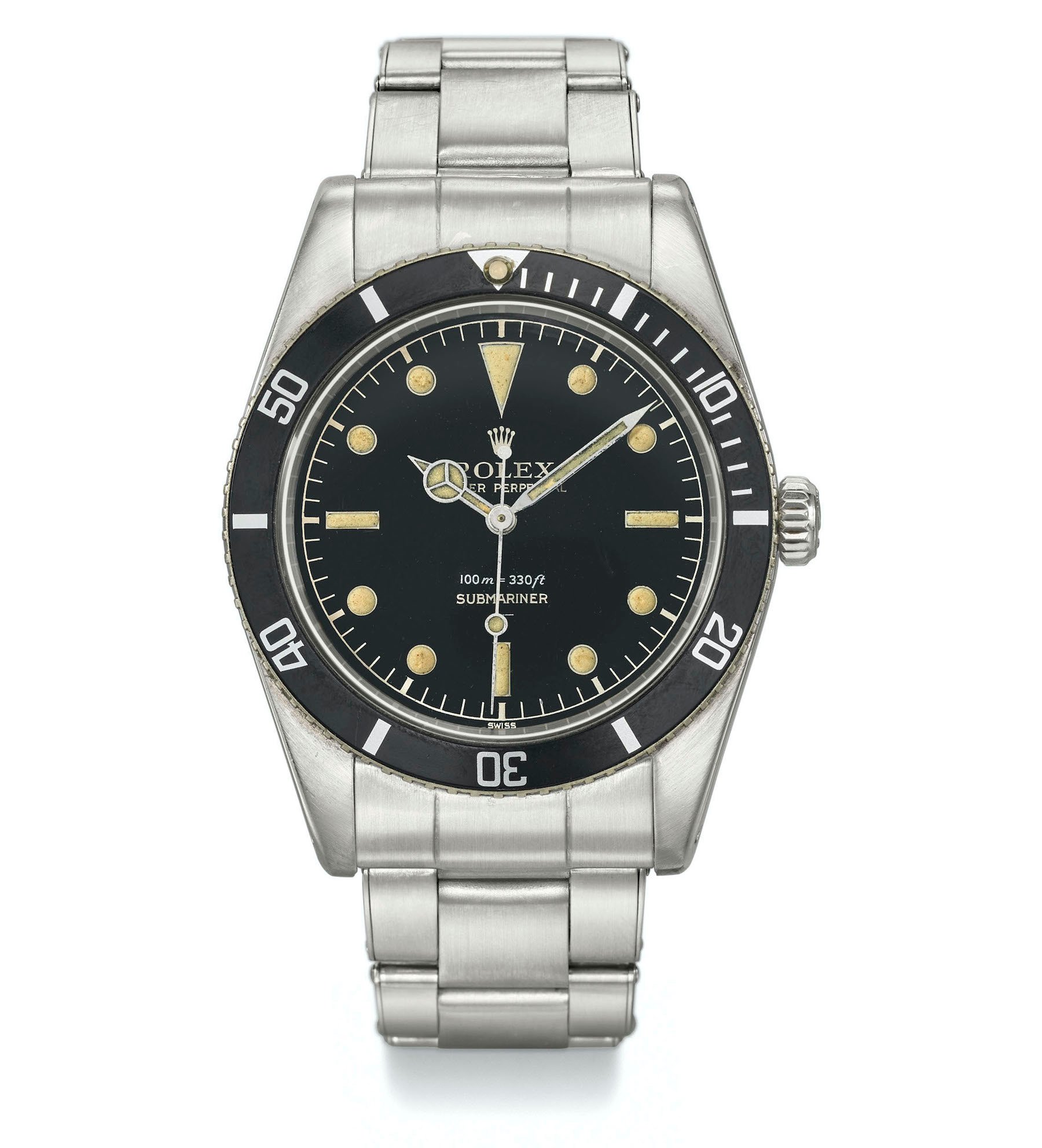
The 5508 is also the first reference of the Submariner to start using tritium paint to illuminate the dial, as opposed to radium. Until this point, the latter had been the material of choice for most watch manufacturers, until the health risks of using a radioactive material became apparent.
Perhaps most importantly for collectors though, is the fact that the Ref. 5508, which ceased production around 1962, is the last Submariner ever produced without crown guards.
Ref. 5512 – 1959 – 1980
Although the 55XX references technically started with the two models discussed above, it’s fair to say that the second generation of the Rolex Submariner actually begins with the Ref. 5512. I would even go as far as to say that when most collectors collectively refer to “vintage” Submariners, it’s likely this is the model they’re thinking of. This is the blueprint for the modern Rolex Submariner.
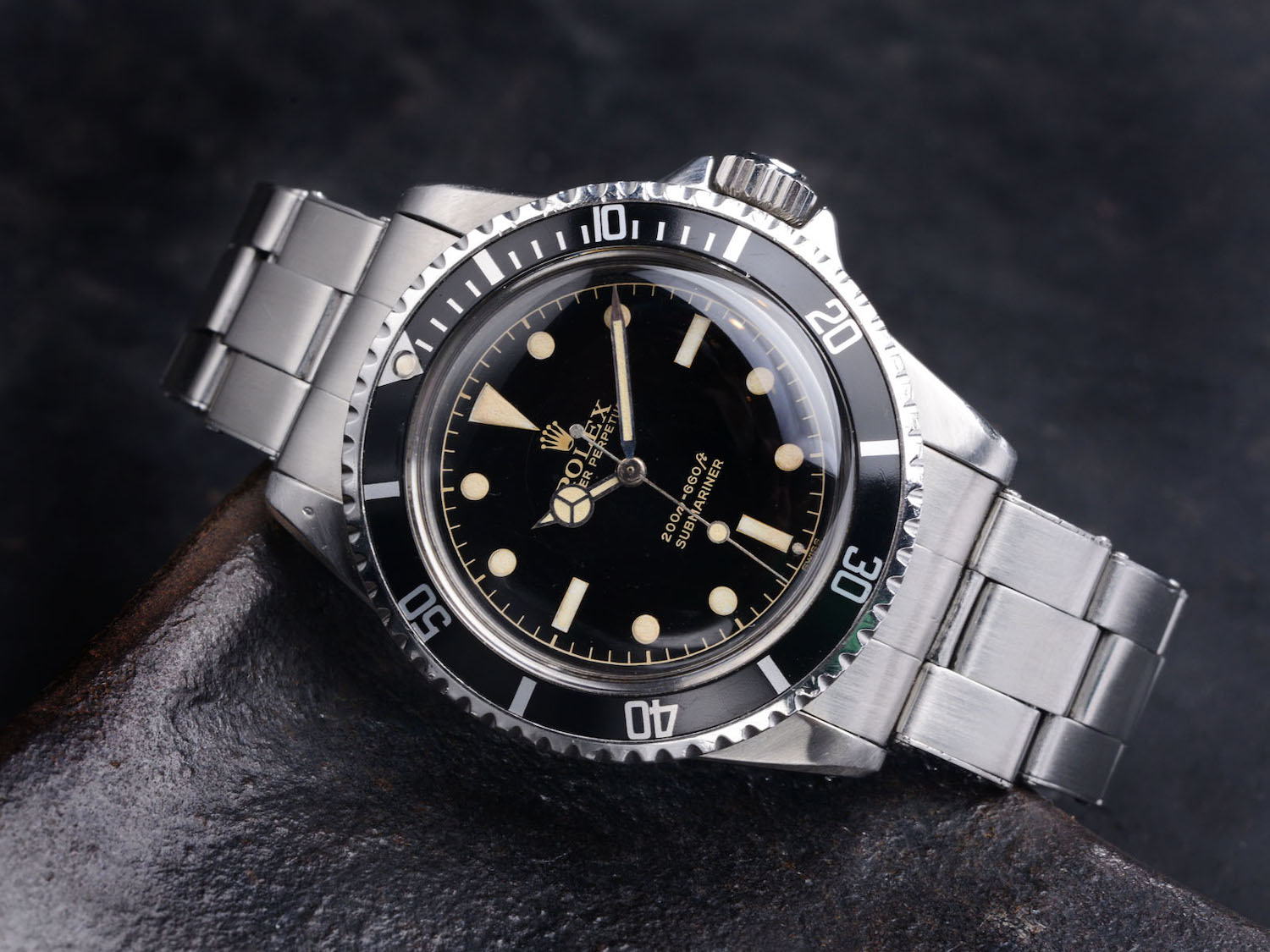
The round case is approximately 40mm in diameter and the crown – now 7mm – is protected for the first time by crown guards. The shape and style of which Rolex would change numerous times over the coming years, but never go so far as to remove. Early examples of the Ref. 5512 feature gilt dials and four lines of text: “Rolex/Oyster Perpetual” below 12 o’clock and “200m/660ft/Submariner” above 6 o’clock. Just under a decade into production, the gilt dials became matte black dials. Around the periphery is the now-familiar rotating hashed bezel, first with an upside-down red triangle and then later a silver one. Both with a luminous dot in the middle of them.

Rolex would, of course, continue to make tweaks and changes to Ref. 5512 over the years, most notably to the dial. We’re not going to go into all the minor variations here, but perhaps one of most significant is the introduction of an additional two lines of text above 6 o’clock; “Superlative Chronometer / Officially Certified”. This marks the point (early 1960s) where Rolex shifted from using the non-chronometer calibre 1530 to the certified calibre 1560. This would later be updated again to the calibre 1570, which itself would be updated with a hacking mechanism in the early 1970s.
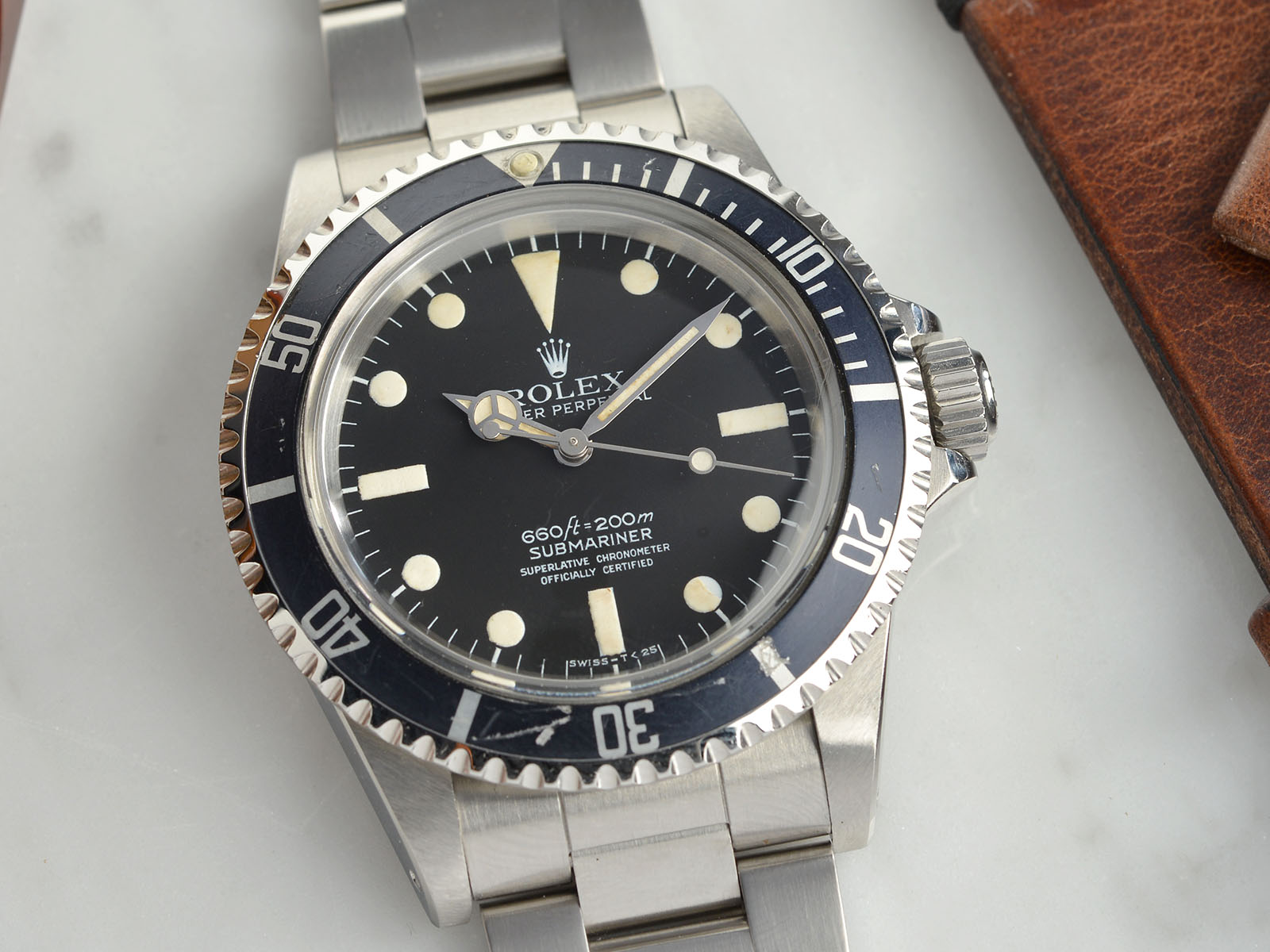
These two extra lines of text also serve to distinguish the Ref. 5512 from the almost identical Ref. 5513, which we will look at in more detail now.
Ref. 5513 – 1962 – 1989
The Ref. 5513 came to market in 1962, around three years after the Ref. 5512. In a nutshell, the two watches are exactly the same, except one got a chronometer movement and the other didn’t. Of course, this being Rolex, things are a bit more nuanced than that. Regardless, this was a clever marketing move by Rolex as it allowed them to position the Ref. 5512 as the more premium option of the two. This then opened the market up to those who wanted a Rolex Submariner but didn’t necessarily want to pay extra for a chronometer movement. And in fact, the Ref. 5513 used the same calibre as was found in the first Ref. 5512s – calibre 1530.
One of the reasons collectors get so excited about the Ref. 5513 though, is that this is the Submariner Rolex tended to use for its more liberal experimentation. For example, there’s the sought-after ‘Explorer’ dial Ref. 5513, produced between 1962 and 1965. As the name suggests, this Submariner has an Explorer-style dial (with Arabic numerals at 3, 6, and 9 o’clock), much like the Ref. 6200 we covered in Part 1. (Although the dials themselves look very different between the two references.) This was the last of the ‘Explorer’-dial Submariners, making them very sought-after.
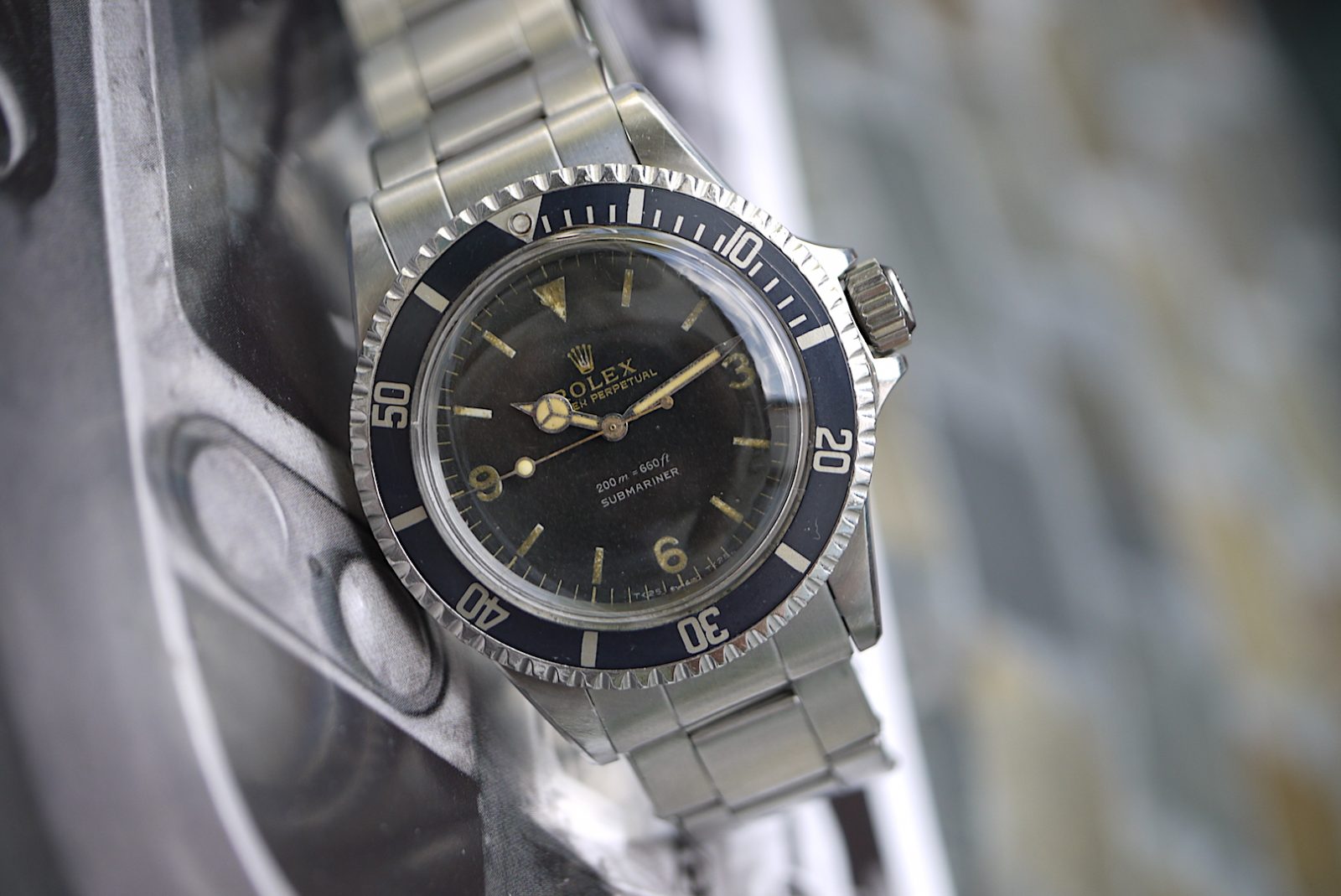
Another famed Ref. 5513, is the ‘Milsub’, a Rolex Submariner made specifically for the British Ministry of Defence during the first part of the 1970s. The Ref. 5517, a special reference used exclusively for the British Armed Forces, later superseded this in the second half of the decade (and it’s also possible to find double referenced 5513/5517 models too). It’s hard to imagine today, but Rolex actually modified these watches at the factory to satisfy MoD’s specific requirements. These included fixed bar lugs instead of the usual spring bar variety. The dials also needed to be easily readable, and therefore featured larger “sword” hands and showed the international symbol for Tritium, the encircled letter “T” that can be seen just above 6 o’clock. Another unique feature is the rotating bezel with sixty-minute hashing (versus the standard bezel which only has the first 15 minutes).
There are also a number of other Ref. 5513 dial variations, to which wily watch dealers have given names such as ‘underline’, ‘double Swiss underline’ and my favourite, the ‘Bart Simpson’ dial. And let’s not forget the important debate of feet first versus metres first. In case you haven’t realised yet, we are not going to go into painstaking detail about the subtle differences in the way dials were printed (primarily for practical purposes at the time), and which have subsequently been ascribed huge premiums based on questionable logic. Sure, it makes the hobby fun, but as much as possible we like to try and stick to the facts here at MONOCHROME.

As production drew to a close on the Ref. 5513 in the late 1980s, it was already possible to see the modern Rolex Submariner emerging. The dial was now the glossy black we are familiar with today, and the tritium hour markers encircled by white gold. As you will soon see, these traits would carry across to the next generation of 5-digit Submariners.
Ref. 1680 – 1969 – 1979
Ten years after the Ref. 5512 came to market, and 16 years after the Submariner made its debut, Rolex decided to produce a version with the date. The answer to the question, “why now?” is anyone’s guess. It most likely had something to do with the fact that the company had introduced the Sea-Dweller two years earlier. That watch – which featured a date window, albeit without a cyclops – was markedly thicker than the Submariner due to its increased depth-rating. It’s highly possible that as a result Rolex was inundated with requests that the more wearable Submariner get a date window. Never one to miss an opportunity, the brand complied.

Timing aside, the introduction of a date window would prove to be a watershed moment for the Rolex Submariner. The model with the date would eventually supersede the popularity of the original, non-date version, by a substantial margin. So much so, that people now commonly incorrectly refer to the two models as the Submariner and the “no-date” Submariner (whereas in reality the former is actually called “Submariner Date”). Regardless, the addition of a date aperture – magnified by Rolex’s famous cyclops – split the market in two.
The first version is commonly referred to as the “Red Sub” due to the Submariner name appearing on the four-line gilt dial in red lettering. Rolex made several dial variations (or Machs) over the Red Sub’s six-year production life, and again collector’s like to quibble on the details of each. Inside was the self-winding calibre 1575, already at work in the Datejust and GMT-Master. This movement was later upgraded with hacking seconds, so you could set the time more accurately.

In the same year, Rolex also made the bold (albeit, in hindsight, not entirely unexpected) move of rolling out the first-ever solid yellow gold Submariner. As the least ‘tool’ watch variant of the two, the Submariner Date was the obvious choice for this new iteration. For many purists, this marks the point at which the Submariner crossed over from functional tool watch to mass consumption luxury watch. (Although I’m told the terms “mass-consumption” and “luxury” are incompatible.) Regardless, the solid, 18k gold Submariner Date was a hit, right down its questionably named “nipple” dial. First appearing in black, it was later followed by a blue dial variation with matching blue bezel.
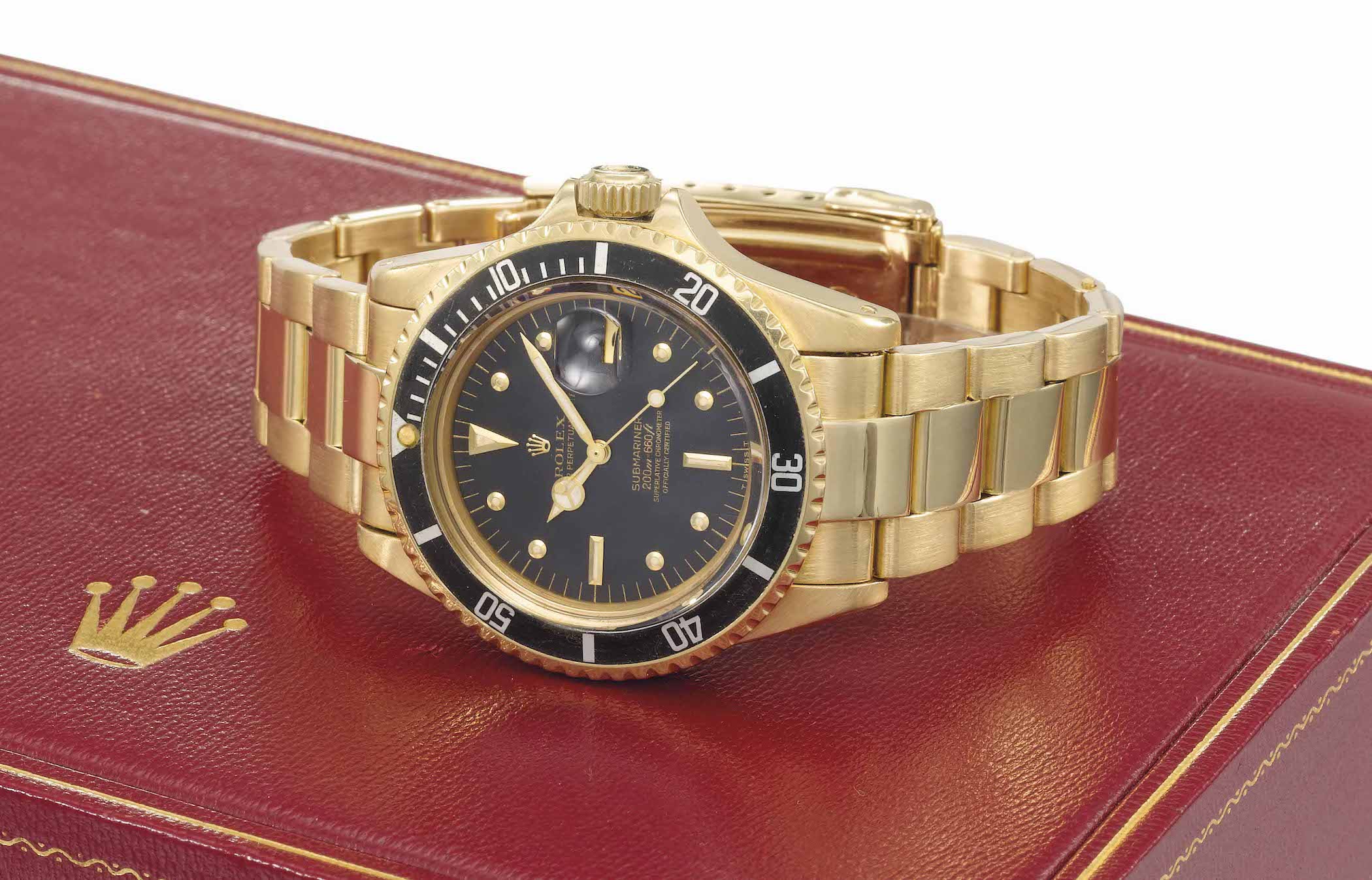
The other variation of the Ref. 1680 worth mentioning is, of course, the “COMEX” Submariner Date. Rolex had already worked with engineering and deep diving operation specialist COMEX (short for Compagnie maritime d’expertises) a few years earlier to develop the helium escape valve for the Sea-Dweller. Subsequently, the brand produced Ref. 1680 Submariners exclusively for the use of the company, for free. In return, Rolex got feedback on how its watches performed in these underwater environments and some fantastic PR. These models – with the name “COMEX” emblazoned across the bottom half of the dial – were never sold directly to the public. The Ref. 1680 versions weren’t fitted with helium escape valves though, so they mostly served as desk divers for COMEX office staff. Rolex also produced Ref. 5513 and Ref. 5514 Submariners for COMEX too, and these were the ones fitted with HEVs.
That closes out our discussion on the second generation of the Rolex Submariner. In Part 3, we will focus on the 5-digit Submariners, and the important changes introduced in this third generation of the collection.
You can find here the 4 parts of the History of the Rolex Submariner:
- Part 1, The Early References
- Part 2, The 55XX Generation and Date 1680
- Part 3, The 5-digit Series
- Part 4, The Modern Ceramic Models
Photos: Antiquorum, Christie’s, Bulang & Sons, AnalogShift, Rolex Passion Market, Lunar Oyster, Hodinkee.

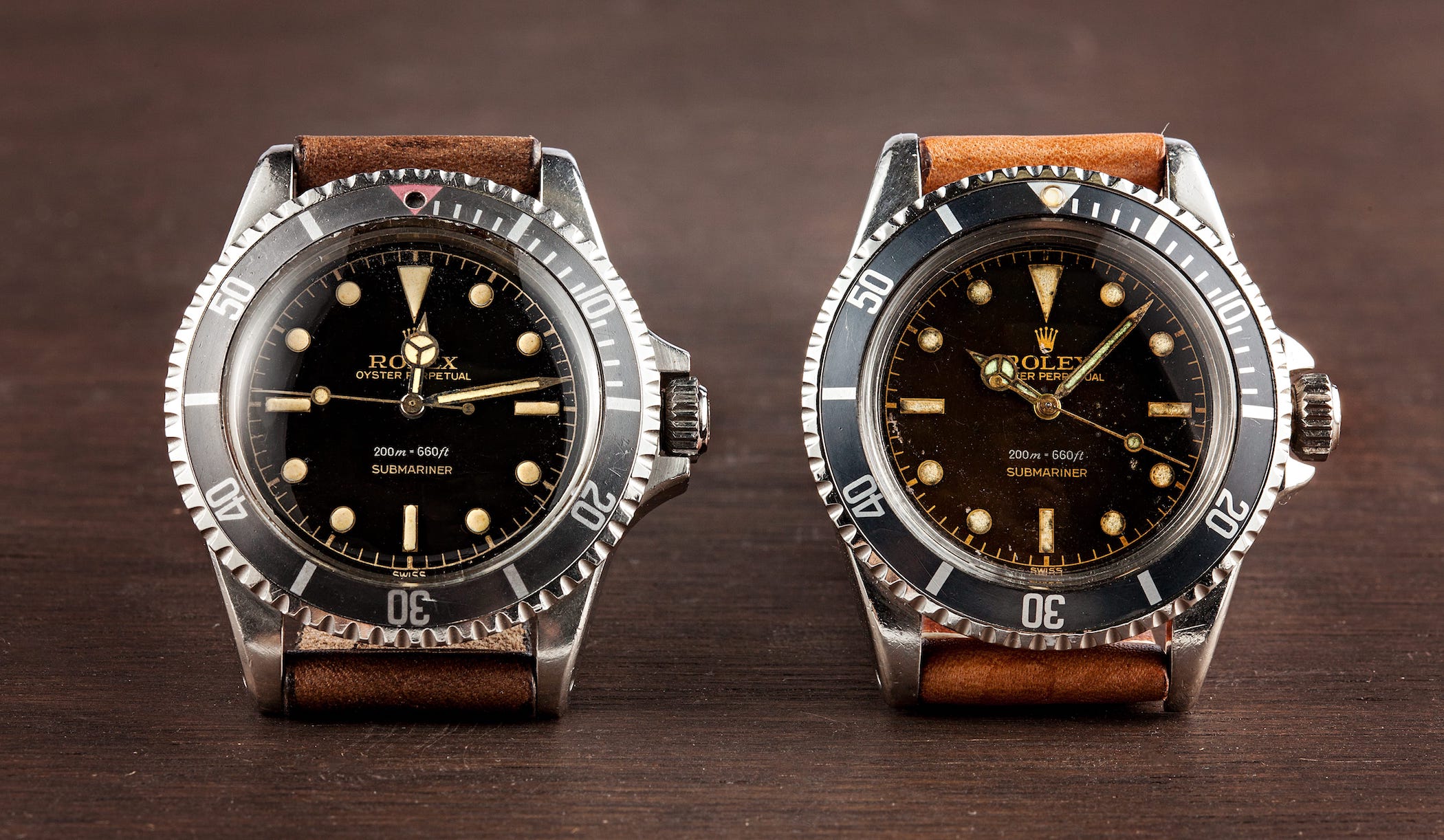
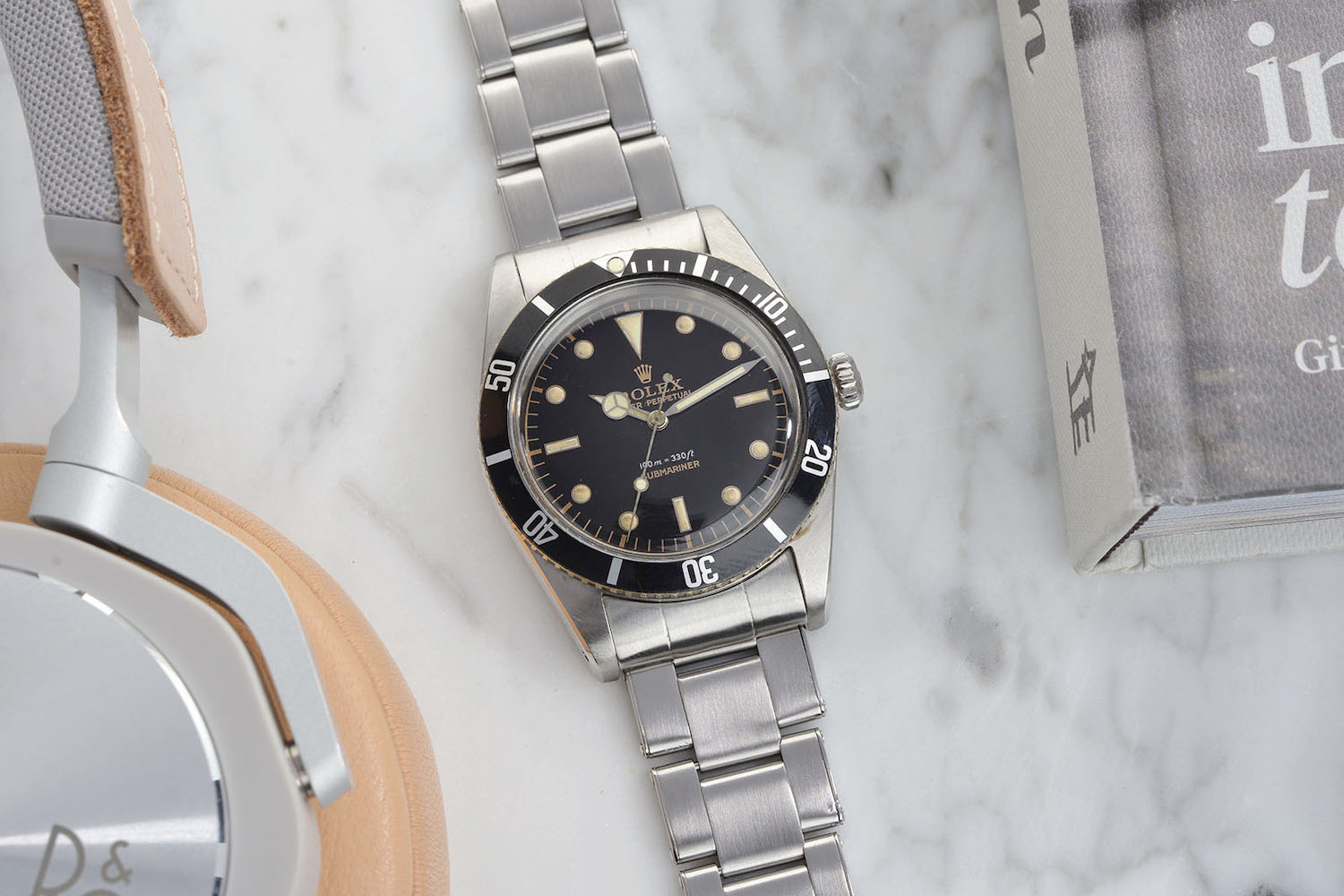
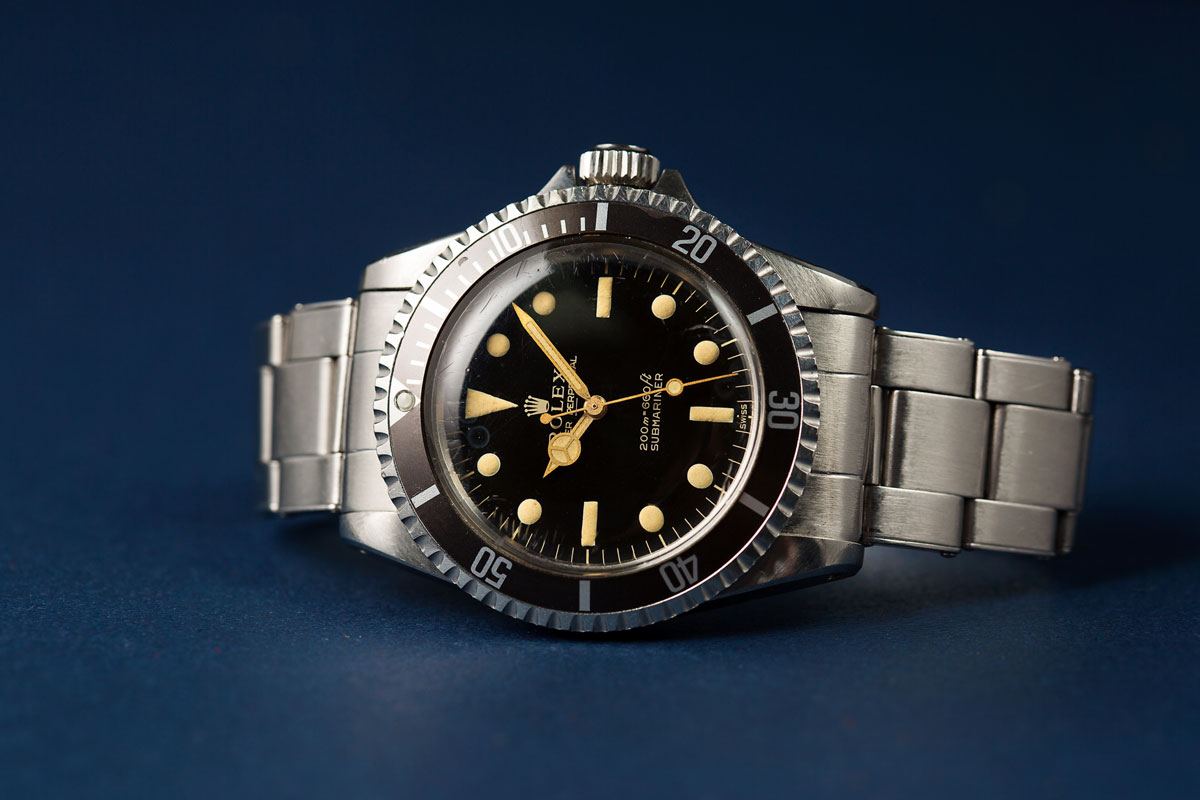
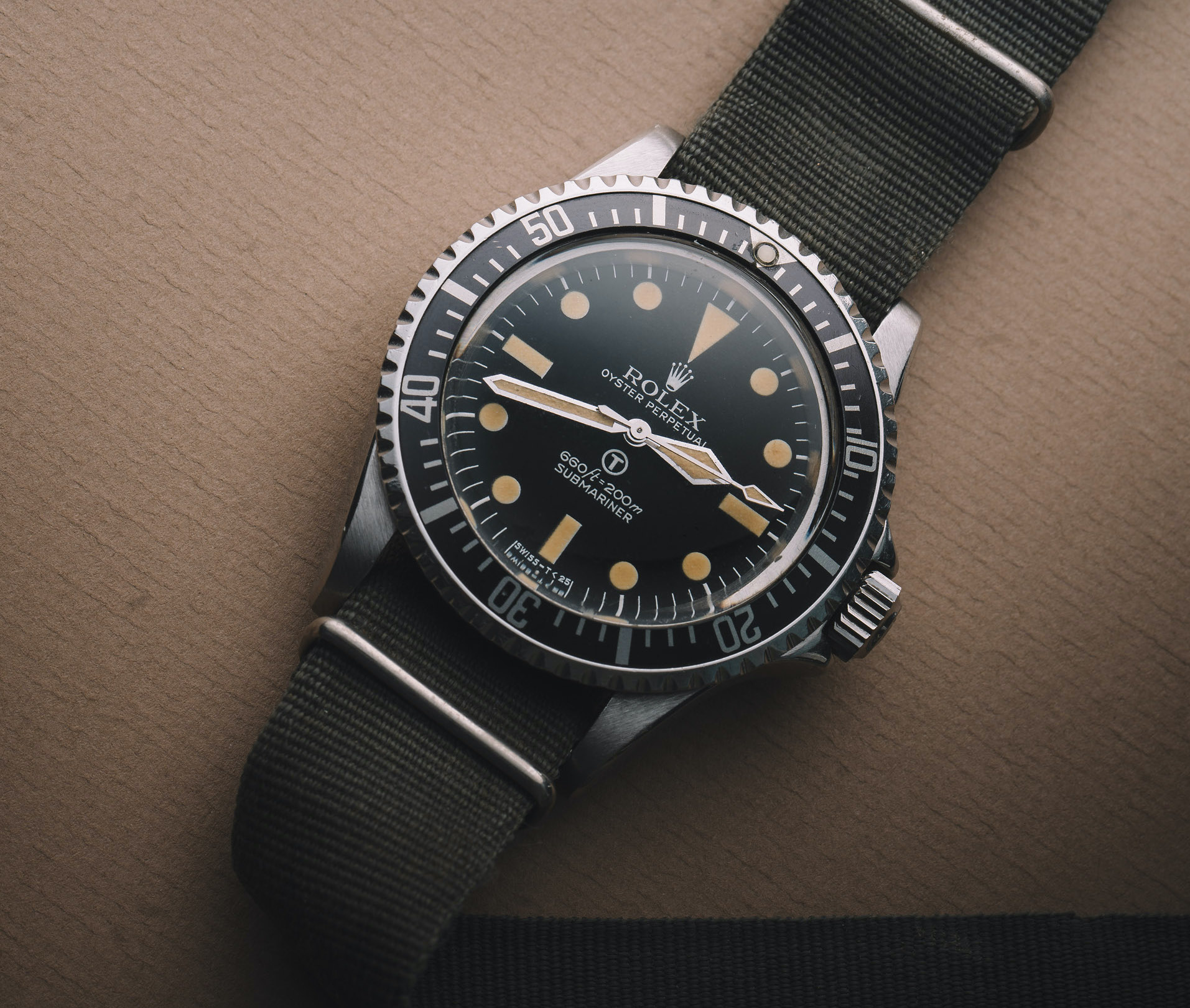
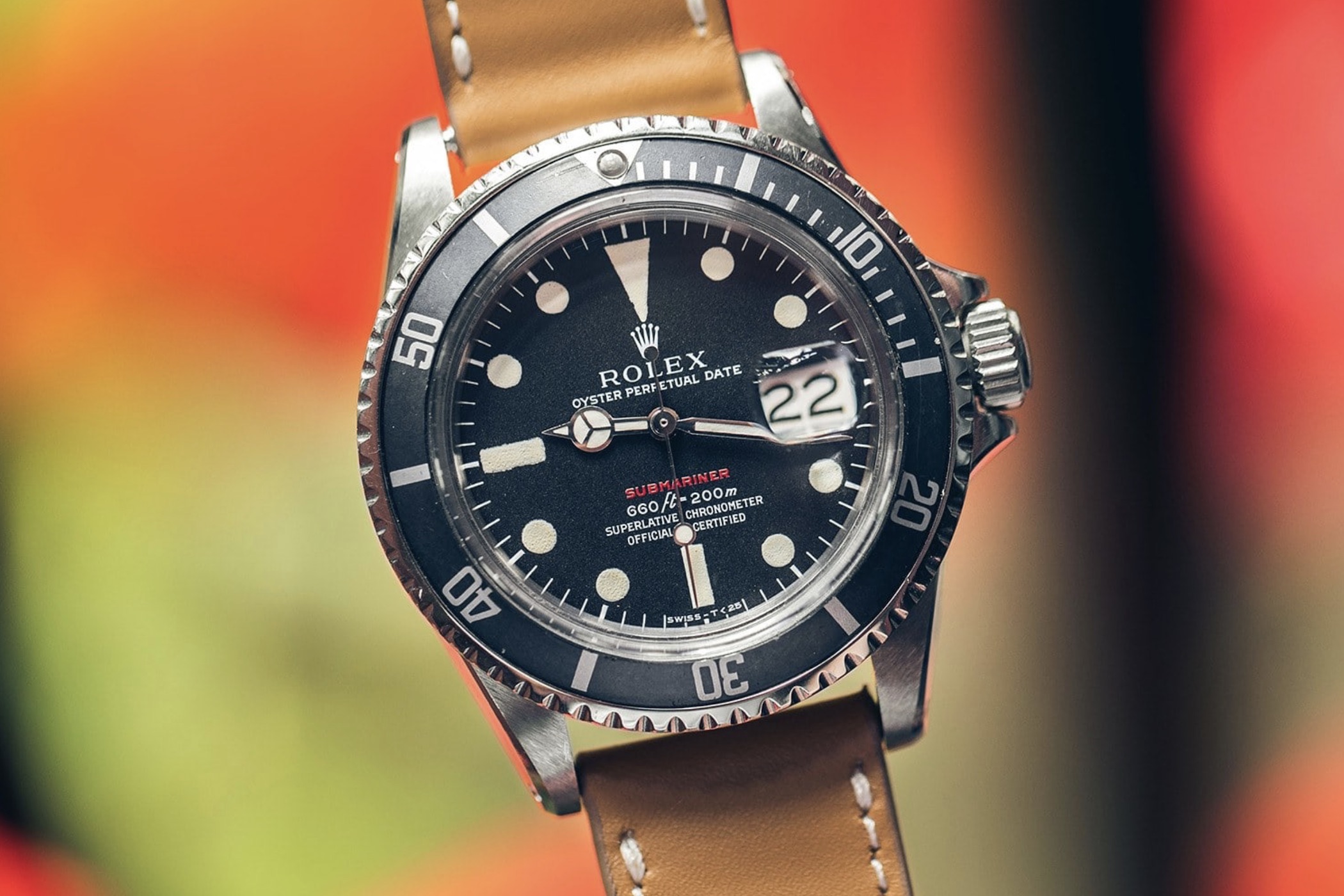




1 response
Just a question of soneone who has ni clue.
Did the case of the 5512 change also over the time. I have seen (in the internet) 5512 where the case is thicker, and other 5522 where the case is thinner?